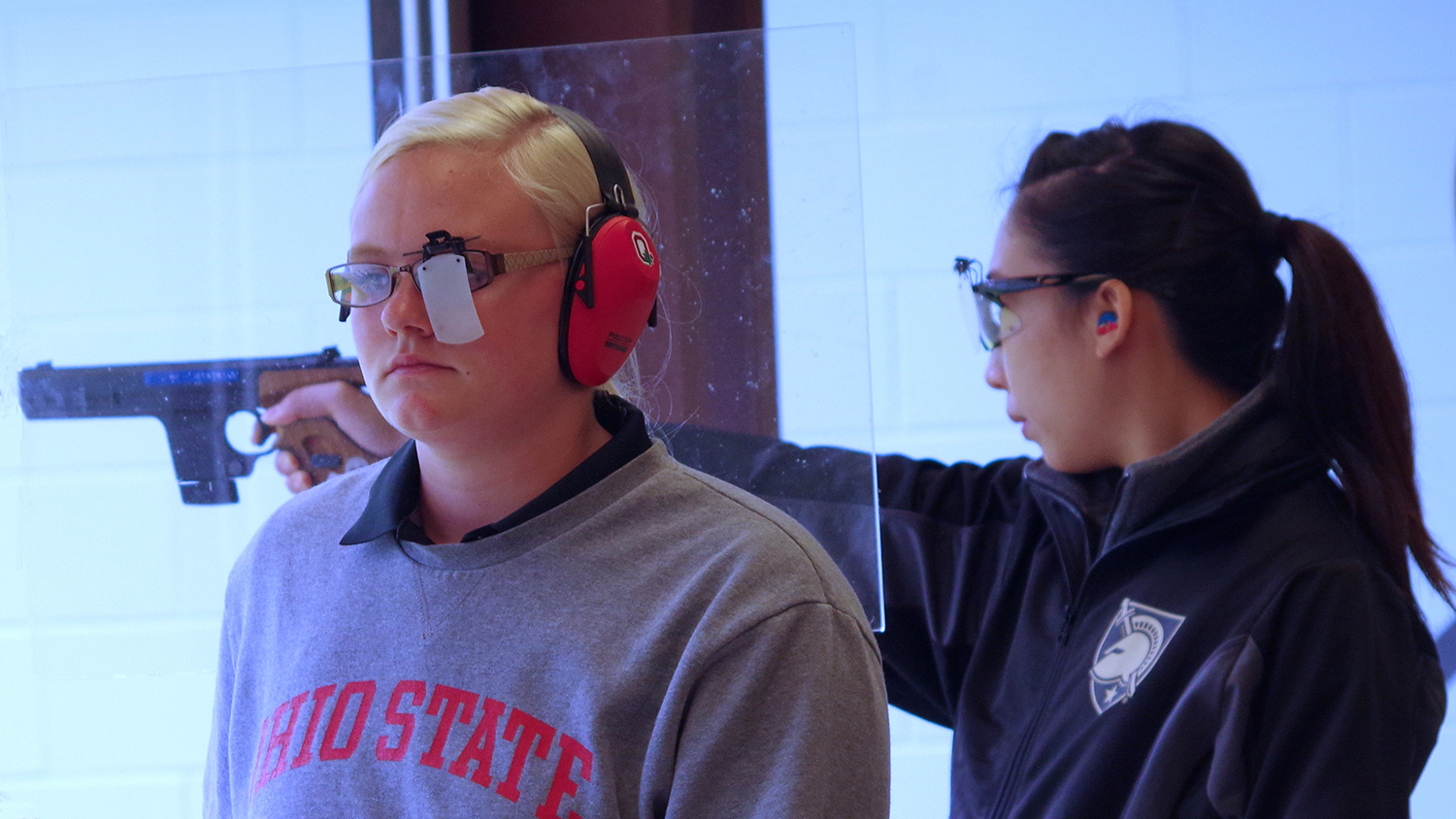
Justyne Niemman stands at the ready at the starting line, her .40 cal. pistol sitting neatly in a holster on her hip. Hands resting against the barrier wall, she signals with a slight head nod that she is ready. There’s a short pause then the distinct sound of the shot timer’s buzzer. With that, she’s off popping rounds down range at cardboard targets. Expertly ducking around obstacles and navigating the course of fire, for a brief moment spectators forget she’s 13 years old.

This is the shooting sports arena—brimming with young shooters and older shooters, male and female, covering all spectrums of ethnicities. The appeal of this sport, of course, is that anyone can pick it up and give it a try. Niemman, a teenager, has already proven that age and gender aren’t a limiting factor when it comes to expertly wielding firearms in a timed match.
“It does not matter if you are short, tall, skinny, young, or old. You can overcome limitations and if you practice you can be successful,” Niemman told Shooting Sports USA.
Niemman isn’t the only competitive star in her family. Her sisters: 12 year old Alyssa and 9 year old Kamryn also spend their weekends tackling larger and sometimes older opponents in the shooting ring.
“Shooting sports are a very fair sport,” Kamryn elaborated. “It is broken down so that you are competing against people in your own skill level. Some courses are designed for athleticism, some for problem solving, and some for accuracy; so, it is a great sport for all skill levels and abilities.”

The “come as you are” approach to shooting has benefited its numbers as the shooting sports have seen a steady uptick in interest over the years. A NSSF (National Shooting Sports Foundation) study conducted in 2014 found that roughly 51 million Americans participate in the shooting sports with participation rates in each shooting activity increasing. The NSSF study reported that the estimated number of target and sport shooters rose 25.6 percent over totals tallied in 2012. Of the newcomers surging into the sport, 25.9 percent were women.
Mark Grimsely, an IDPA and 3-Gun shooter, the components of shooting make it more accessible to a broader range of people thereby creating an attractive sport for folk of all sizes and shapes.
“In more ‘traditional’ sports, strength, speed, and agility are the primary foundation for winning; however, in shooting sports, the foundation for winning is speed and accuracy in shooting while navigating the course,” Grimsely said. “I know a number of female competition shooters that are smaller, not as strong as me, and cannot run as fast as me but their split times are better because their shots are more accurate than mine. So, while I may be able to navigate a course of fire faster, I may lose the round since their shot place could better. This levels the playing field to allow anyone to compete regardless of size, shape or abilities.”
Eschewing traditional sports where muscles and brawn might affect a participants’ ability to be competitive, the shooting sports offer a unique ability for almost anyone to pick up a gun and go. USPSA, 3-Gun and IDPA competitor (and Shooting Illustrated contributor) Annette Evans says this factor has resulted in a changing landscape as more spectators recognize that guns truly level the playing field for athletes.
“When I started shooting competitively about eight years ago, I’d be the one of the only women at a match,” Evans explained. “Now I see more shooters of every color, of every persuasion, of every interest. It’s not just the women, although they’re the most visible. I’m seeing more of tactically intensive guys coming out and to see what (matches) can do for them.”

Though guns do offer a significant advantage in terms of closing the gap between competitors, Evans said that gun enthusiasts shouldn’t automatically assume that shooting requires little skill or athleticism. In fact, she emphasized, it can be just as athletic as other sports.
“So guns are kind of the great equalizer. I think we all agree on that,” Evans commented. “There’s no particularly huge amount of strength and physicality that's required to shoot; however, this is a sport at all levels—even the ones where we don't move around a whole lot. That means there's a certain amount of strength and there's a certain amount of physicality that’s going to make you better. At the end of the day we're doing things that require athletic performance.”
While strength and condition do improve performance, ultimately success in the shooting world comes down to perseverance and practice.
“Practice and pushing yourself is how to get good enough to win,” Alysaa Niemman offered. “You have to practice to get better at competitions … it is not the gun but the person behind it.”
Evans mirrored the sentiment, urging new competitors to simply come out to matches and keep trying.
“Stick with it.” Evans urged. “There's so many of them coming out trying it once or twice and leaving. Just stick with it.”


































